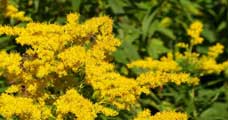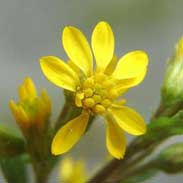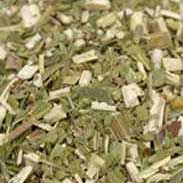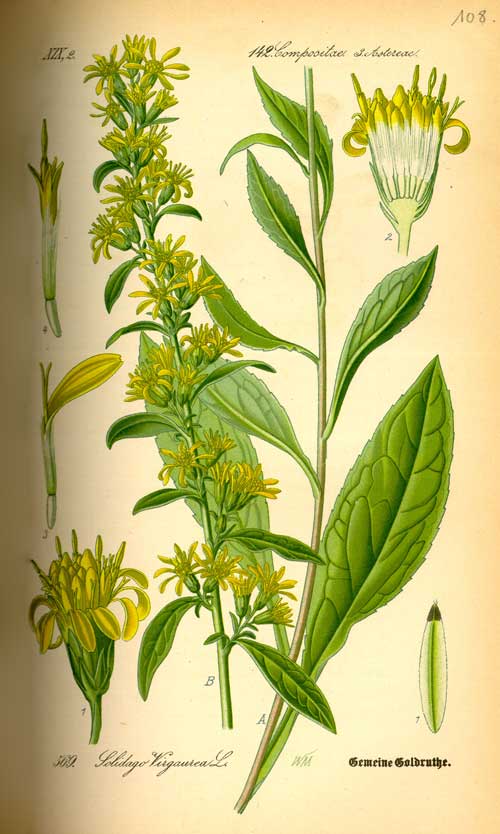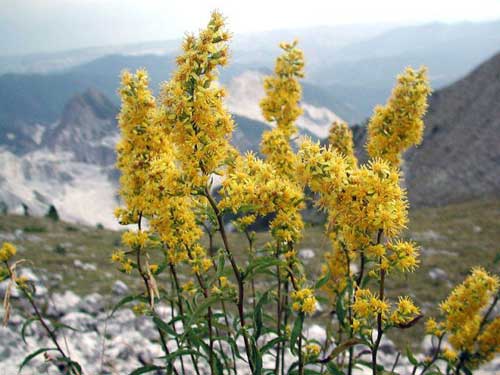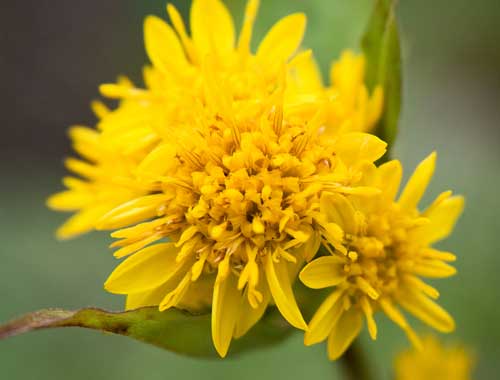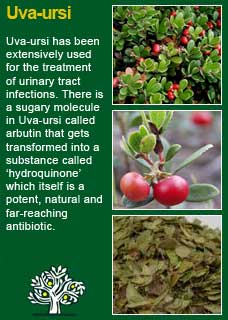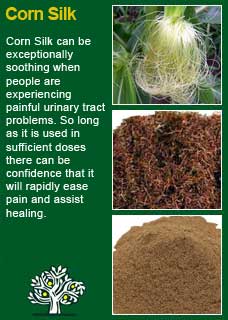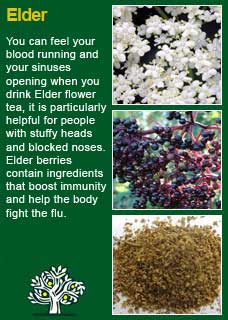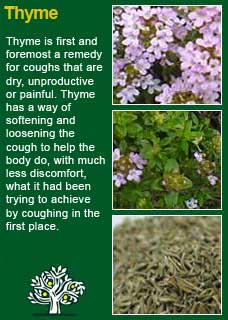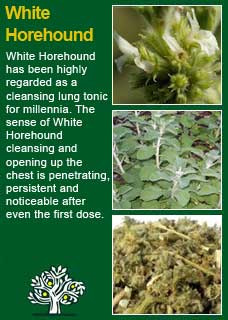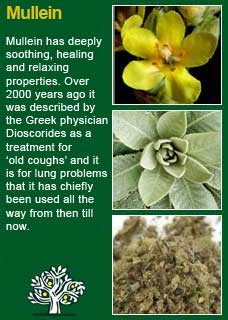
|
|
||||
| Our Pages ABOUT CONSTITUTIONAL MEDICINE
|
The leaves and flowers of Goldenrod, a vigorously growing, upright and long-lived herb that produces long stems with crowds of yellow flowers springing out along their lengths.
Goldenrod's chief traditional reputation is for helping to generally cleanse the urinary tract and it is thought to help remove gravel from the kidneys. Goldenrod has also been widely used for problems involving stuck mucus in the body and it has been widely recommended for chronic colds and sinus congestion, for bronchitis with infected phlegm, for thrush and for tonsillitis with phlegmy discharges. Rudolph Weiss M.D writes 'Goldenrod is an old and familiar medicinal plant that is ascribed manifold therapeutic properties; the most important of which is its diuretic action which, when taken with plenty of fluids, gives it an antiphlogistic (anti-inflammatory) and spasmolytic (spasm relieving) effect on the smooth muscles'. King's Dispensatory writes 'sweet-scented Goldenrod is gently stimulant and carminative, and, in warm infusion, diaphoretic. It may be given in infusion in flatulent colic, amenorrhoea, sickness at the stomach, and as a pleasant drink in convalescence from severe dysentery, diarrhoea, cholera morbus etc.; and may also be added to nauseating medicines to render them more agreeable to the taste. The flowers are aperient, tonic, astringent, and diuretic, and have been found beneficial in gravel, urinary obstructions, ulceration of the bladder, and in the early stage of dropsy' Grieves writes 'Goldenrod is astringent, diuretic and efficacious for stone in the bladder. It is recorded that in 1788 a boy of ten, after taking the infusion for some months, passed quantities of gravel, fifteen large stones weighing up to 1 1/4 oz, and fifty over the size of a pea. It allays sickness due to weak digestion' TJ Lyle writes 'in catarrh and especially in influenza, Solidago is very valuable. It cures quickly and completely. I have had more complete eradication of influenza from the use of Solidago, either alone in hot infusion, or in combination with other suitable agents, than with anything else' David Hoffmann writes 'Goldenrod is perhaps the first herb to consider for upper respiratory tract catarrh, whether acute or chronic. The plant may also be used in combination with other herbs to treat influenza. As an anti-inflammatory urinary tract antiseptic, Goldenrod may be helpful in cystitis, urethritis and similar conditions affecting the system' Thomas Bartram writes that the actions of Goldenrod include 'anticatarrhal, anti-inflammatory, antiseptic to mucus membranes, diuretic & diaphoretic'. He suggests uses for it including a 'weak stomach, nausea, vomiting, hiccups, persistent catarrh of nose and throat, irritable bowel in children, bronchitis with purulent phlegm, tonsilitis with pus, blood in the urine, reduces mass in kidney stone and gravel, prostatitis and kidney or bladder conditions where urine is dark scanty and reddish brown' Bartram suggesting doses of 0.5 to 2 grams of the dried herb or 0.5 to 2 mls of the 1:5 tincture.
~ A strong diuretic effect (it increased the production of urine) was observed in healthy volunteers in a double-blind, placebo-controlled study with a single dose of Goldenrod; 100 drops or 4 mls of the tincture ~ In a clinical trial of patients with urinary tract inflammation 70% experienced complete disappearance of symptoms of pain, frequency and urgency with the use of Goldenrod tincture (Bruhwiler K et al: 4th International Congress on Phytotherapy, Munich, Sept 10-13, 1992: Abstract SL20) ~ A randomised, double-blind controlled clinical trial using Ash, Poplar bark and Goldenrod for rheumatic conditions concluded that the herbal medicine was comparable to NSAID (non-streroidal anti-inflammatory drugs) but with a much lower incidence of side effects (Klein-Galczinsky C: Wien Med Wochenschr 149(8-10):248-253, 1999) ~ Laboratory studies have shown that saponins from Goldenrod have immune modulating and anti-tumour effects; other constituents (flavonoids) in the plant have been shown to have diuretic effects and to cause an increase in electrolyte excretion; yet further substances in the plant (3,5,-O-caffeoylquinic acid) have shown effects on adrenal hormones in a way that may go to explain its anti-inflammatory actions (Strehl E et al: Arzneim Forsch 45(2):174-176, 1995) & (Melzig MF et al: Z Phytother 21(2):67-70, 2000) ~ The authors, titles and the 'where-and-when' published of over 40 further studies and articles on Goldenrod are listed in a PDF found here
For some years now, against this proven and safe way of herbalism, there has been a rising tide of excessive caution and scare-mongering in many parts of the world. The same authorities that, not so long ago, decried herbal medicines as ineffectual, have now taken up a different adversarial position; that they are dangerous substances that should only be prescribed by Doctors, who of course have zero training in them. Unfortunately, the same unnecessary fear and worry has crept into many natural health websites and popular publications on herbs. Herbs that we have safely used for thousands of years, that have no reports of adverse reactions in the medical literature despite widespread use by millions of people, are suddenly described as contraindicated because of something that should have been seen as completely unimportant, or at the utmost a merely theoretical concern, such as a laboratory study on one of the herb's constituents to use an all too common example. I wonder sometimes if the writers of such articles feel that the herb will be more deserving of respect if it is thought to be a little bit dangerous, in other words more like a drug than something that has simply come out of the earth and been used by ordinary people for generations beyond count. There is just so much misinformation about herbal medicine on the internet now. Ludicrous claims and cautions abound in equal measure; it seems like one group are trying to make money out of the public whilst the other are busily trying to scare them off. I have to believe that the kind of reader who takes the time to read pages on herbs that are as extensive as this one is much less likely to be swayed by marketers or misinformers. I hope that you will keep your wits about you if you get conflicting opinions from people who have never really got to know these herbs, who have never worked with them, or learned how to use them safely and effectively. I want to remind you that the reason that herbs can never be patented and owned by any individual or corporation is because they are, and always will be, the People's medicine. They belong to all of us and it is my great hope in sharing this work that you will learn how to use them wisely for yourself, and the people you care for. Be safe, but do not be afraid.
Goldenrod is a potent, activating, stimulating decongestant and for the right person it is a great health ally to use when needed for as long as needed. I have particularly found Goldenrod to be an excellent aid to people who need to cleanse their blood and body via their kidneys and it is especially indicated when the urine is dark and reduced in quantity and if there is a pattern of stuck or congested illness or inflammation in the body. A person may only be aware that their joints are aching or that they have chronically bad digestion and not connect the fact that for a long time they have been dehydrated and their kidneys have been functioning poorly. Taking a course of Goldenrod along with plenty of water in such cases can cause a dramatic turnaround to the health status. There is something about the vibrancy of Goldenrod’s growth and its intensely yellow flowers that translates into the potency of this medicine. Many herbs build their actions quietly and gently over time but Goldenrod, if taken correctly, is likely to be noticed fairly immediately. If you who are reading this are studying herbal medicine or simply want to get to know this plant ally more deeply for your own reasons then I warmly encourage you to drink a cup of its tea or take a dose of its tincture and then, with a quiet and attentive mind, observe for yourself what happens next! I can assure you that it will be nothing bad (the taste is a little bitter, astringent, herby and earthy but really not that difficult) but Goldenrod is a deep and energetic medicine that you will likely feel pushing in a subtle but palpable way to wherever you may have a block of 'damp heat' in your body (which is an old fashioned way of describing inflammation). This 'pushing' doesn't take a person's symptoms away but rather helps the body to move what it is that has become blocked... I'm sorry if that sounds cryptic to you; the best way to understand any of this is to try for yourself and see - it will give you an appreciation of the herb that no amount of abstract learning will achieve! Further to this, if you would like to learn more about the ancient art of pulse testing, a simple but powerful way to ask the intuitive intelligence of the body for its responses to a herb by feeling the pulse whilst giving a tiny dose by mouth, read here It is quite likely that a person who starts a course of Goldenrod will notice that they cough more, or pee more, or blow their noses more or even sneeze more for a while after they start using it - wherever the mucous membranes of their body need a clean is where they will most likely feel it the most. It does not seem that especially large doses are needed to get a reliable action from it, as little as a heaped tsp in a tea (which equals approx 1 gram), or 1-2 mls of Golden Rod in a formula with other herbs. Higher doses are safe to use if needed but may not be necessary to achieve the medicinal action of the herb. Goldenrod combines perfectly with Uva ursi, Corn Silk and Elder flowers for all kinds of urinary tract problems. It works particularly well with Thyme for head and upper respiratory catarrh and with White Horehound and Mullein for chest and lung congestion. I use a great deal of Goldenrod in a cleansing tea that we give people - details on this are here and a tea that we give to people experiencing urinary tract infections or similer troubles, details here
Much of the information here about the traditional uses of Goldenrod is consistent with the model of thinking whereby one may treat problem A with plant B. There is value in this approach, especially in how it helps us pass on useful knowledge to one another, but it falls short in one vital area; and that is that people are not all cut from the same cloth! Something that works brilliantly for one person may do less for another -- why is this? Part of the reason is that people vary in their constitutions as to whether they are either hotter or cooler and, at the same time, either dryer or damper. This useful and rather fascinating subject is introduced further here Another big part of using the right herb when it is most needed comes from understanding the need to treat what is going wrong for the person that had led up to their getting a health condition. In this light, Goldenrod can particularly offer its benefits when a cleansing action is needed in the 'cycle of healing', more about this here
Please understand that I cannot advise you, including on products or dosage, without seeing you in person in my clinic but for ideas
on how you might find a good herbalist in your area read here |
|
|
|
© 2011 R.J.Whelan Ltd
